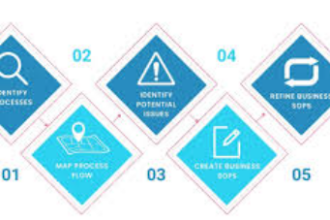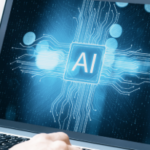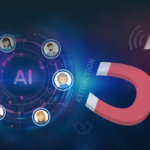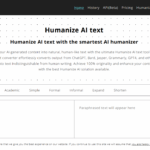In this write-up, we are going to investigate the mysterious field of artificial intelligence (AI) approaches. Artificial Intelligence known as AI in short form is a broad term that includes different methods and algorithms which are created for machines so that they can imitate human cognitive functions.
These techniques are still evolving and changing industries with new ideas such as machine learning or natural language processing while extending our ability and redefining how we relate to technology.
So, let’s discover more about AI methods by looking at where they can be used, what problems do they face and what does future hold for them? Come along with me on an interesting ride through the center of fake consciousness!
What is Artificial Intelligence Techniques?
Artificial intelligence methods include many different systems and strategies designed to make machines think like people. They involve algorithms that learn from data to identify patterns and predict future outcomes (machine learning), neural networks that sift through vast amounts of data for relevant information (deep learning), and natural language processing, which lets computers understand and generate human speech.

Computer vision gives machines the power to “see” things while reinforcement learning enables them to learn from their mistakes. Expert systems mimic human expertise in solving complex problems. These various approaches combine to fuel innovation in countless fields, transforming business models and altering tomorrow’s technological landscape.
Understanding Artificial Intelligence Techniques
To understand internal AI systems, which try to mimic human thought processes, it is necessary to know artificial intelligence techniques. These methods have different foundations, each one very important in teaching the system of how to learn and understand language like humans do so.
AI is built on learning. This means that AI accumulates knowledge from data and experience. They can find patterns or relationships between datasets through this process thereby enabling them to predict and decide for themselves.
Reasoning is a way for machines to think logically by drawing conclusions, making inferences and solving complex problems while acting as an agent which has an influence over its environment based on available information just like people do too.
Another thing about AI Techniques is problem-solving; this involves employing algorithms with mathematical procedures among other computational methods used by artificial intelligence for effective strategies towards handling particular challenges more efficiently such as optimizing delivery vehicle routes or solving intricate mathematical equations among other things.
Perception allows an awareness of surroundings within AI systems where various sensors together with data sources provide the ability for computers’ perception of things around them; For example: Image recognition needs visual inputs processed by the computer so as to determine what objects are present while speech recognition requires translation from auditory input into meaningful information by the machine.
Language understanding stands out as an essential aspect of successful human-computer interaction often achieved through Natural Language Processing (NLP) techniques used when creating chatbots, virtual assistants among other applications meant for communicating with computers effectively.
With NLP capabilities integrated into these systems they should be able not only understand but also interpret context, sentiment besides differentiating various aspects contained in any given piece of text spoken or written by humans thus making language translation apps possible too
Types of Artificial Intelligence Techniques
There are many different types of artificial intelligence (AI) techniques, each with its own unique set of methods and approaches tailored to specific tasks and applications. Here are a few examples:
Machine Learning: This field involves training algorithms to recognize patterns, make predictions, etc. based on data without any explicit instructions being given. Supervised learning, unsupervised learning and reinforcement learning are some common machine learning approaches.
Deep Learning: Deep learning is a subset of machine learning that uses neural networks with multiple layers to process complex hierarchical data structures like those found in images or speech signals. It has achieved significant success in areas such as image recognition and natural language processing.
Natural Language Processing (NLP): NLP focuses on teaching computers how to understand, interpret and generate human language. Sentiment analysis, text summarization and language translation are some techniques employed within this field.
Computer Vision: Computer vision enables machines to perceive and analyze visual information from digital images or videos using artificial intelligence methods such as object detection systems which can identify various objects present in an scene while image classification allows for identifying the type or category an image belongs too among others hence facial recognition technologies enabling machines identify people by analyzing their faces.
Expert Systems: An expert system is designed imitate human experts who possess knowledge about certain subjects so they can help solve complex problems which require such expertise; these systems use representations of human knowledge called “rules” which are implemented through inferencing engines allowing them reach conclusions based on provided facts thereby making decisions accordingly thus providing reasoned advice/solutions where needed most often being used within decision support environments among others
Reinforcement Learning: In reinforcement learning, an agent learns through trial and error how best to act given its current state by interacting with the environment it operates within; rewards indicate good actions while penalties bad ones hence widely applied within robotics/gaming/autonomous areas due their versatility when comes selecting appropriate actions under varying circumstances.
Evolutionary Algorithms: A family of algorithms inspired by the process of biological evolution used for optimization problems; a population consists candidate solutions which “evolve” over time via reproduction (crossover) and mutation driven according to fitness evaluation hence these methods work well when dealing with large search spaces or complex landscapes where other approaches may fail.
Fuzzy Logic: Fuzzy logic is a type of reasoning that acknowledges shades of grey instead strict true/false binary values; it’s employed when boundaries between different classes/states cannot be clearly defined e.g., temperature control systems which maintain desirable indoor climate conditions based upon imprecise inputs/outputs
Probabilistic Reasoning: Probabilistic reasoning refers to techniques used in situations where uncertainty must be taken into account assign various probabilities different outcomes happening being done by using Bayes networks or Markov models among others.
Swarm Intelligence: These methods are derived from observing how groups organisms collectively solve problems without centralized coordination; ant colony optimization, particle swarm optimization etc.
Future of Artificial Intelligence
The future of Artificial Intelligence (AI) is about to change everything, deeply affecting society, economy and technology. The following are some likely trends or developments that will shape the future of AI:
AI Ethics and Governance: With increased pervasiveness, it becomes necessary to ensure ethical use and responsible development of AI. Regulatory frameworks for deploying AI systems will be driven by considerations such as fairness, accountability, transparency and privacy.
AI in Healthcare: Applications of artificial intelligence in healthcare have the potential to transform diagnosis, treatment and personalized medicine. Patient outcomes could be improved while costs reduced through predictive analytics driven by AI, medical imaging, drug discovery or virtual health assistants.
Autonomous Systems: Transportation logistics manufacturing agriculture etcetera will continue being transformed by autonomous vehicles drones robots etcetera. These systems shall operate more often than not without human intervention in complex real world environments.
AI in Education: Learning experiences will be made more personal with curriculum adapting to individual needs using AI technologies. Virtual classrooms enhanced accessibility through adaptive learning platforms coupled with intelligent tutoring systems driven by artificial intelligence; where as assessment tools which are also powered by them shall better educational quality at all levels across different regions globally.
Natural Language Processing: Advancements made within this field can lead us into having advanced interactions between humans machines like conversational AI virtual assistants language translation etcetera. Bridging communication gaps among people from diverse cultures around the globe becomes possible when machines gain understanding power over various languages spoken worldwide thanks to these advancements realized through NLP powered by an intelligent system known as artificial intelligence – “AIML”.
AI for Sustainability: Climate change resource management biodiversity conservation among other environmental challenges can only be solved if we employ the use of AI for sustainable development. Precision agriculture smart energy grids environmental monitoring etcetera are some applications that may help achieve this goal through implementation on a large scale basis backed up with data collected continuously via sensors linked up together forming what is referred to as internet things (IoT) thus creating networks capable of making autonomous decisions towards achieving such objectives.
AI Augmentation: Rather than replacing human workers, AI will amplify the capabilities of people in different professions and industries. Collaborative robots decision support systems driven by artificial intelligence which work alongside humans as well as augmented reality interfaces designed to enhance creativity while at work could lead into increased productivity within workplaces.
Explainable AI (XAI): There is going to arise more need for critical domains like healthcare finance law etc., where AI systems must provide clear explanations about how they arrived at certain decisions. In order to trust them people need some kind of understanding so that they can interpret these recommendations coming from an intelligent software; therefore XAI techniques should be adopted widely across various sectors dealing with AI applications where transparency matters most.
Edge AI and IoT Integration: We are likely moving towards real time data processing decision making closer or at network edge through coupling together Edge computing with algorithms based on artificial intelligence. This means that devices within internet things powered by this combination shall become interconnected resulting into improved efficiency reliability autonomy etcetera associated with such a system.
AI Collaboration and Open Innovation: In order to speed up innovation and make AI technologies accessible to everyone, there should be open source development frameworks fostered through interdisciplinary partnerships among different organizations involved in various fields like medicine engineering communication etcetera. This implies also having collaborative research initiatives whereby experts from different backgrounds collaborate so as to come up with breakthroughs in both application areas and research domains related to artificial intelligence – “AIML”.
All in all, there is great hope for a better future for humanity thanks to advances made in the field of Artificial Intelligence that promise better living standards, economic growth as well as solving global problems. However, it is important for us humans beings ethically consider socializing this technology lest we create some monsters which may turn against their creators ultimately leading into catastrophic events.
Conclusion
To conclude, the range of artificial intelligence (AI) approaches is diverse and ever-changing in the world of technology. These methods are gaining more ground rapidly; they can enable machines to mimic human thought processes and solve complex problems in different fields through machine learning and natural language processing among others.
The future holds great promise for this area which could transform entire industries, increase productivity levels among people as well as tackle some pressing social issues. Nevertheless, it is important to consider ethics with wide adoption ethical considerations should be given priority while responsible development ought to be encouraged therefore all stakeholders must work together as these technologies continue becoming widespread.
By utilizing AI techniques appropriately and inclusively we may open up fresh avenues towards humanity’s advancement thus shaping a tomorrow full of positive change powered by Artificial Intelligence.














